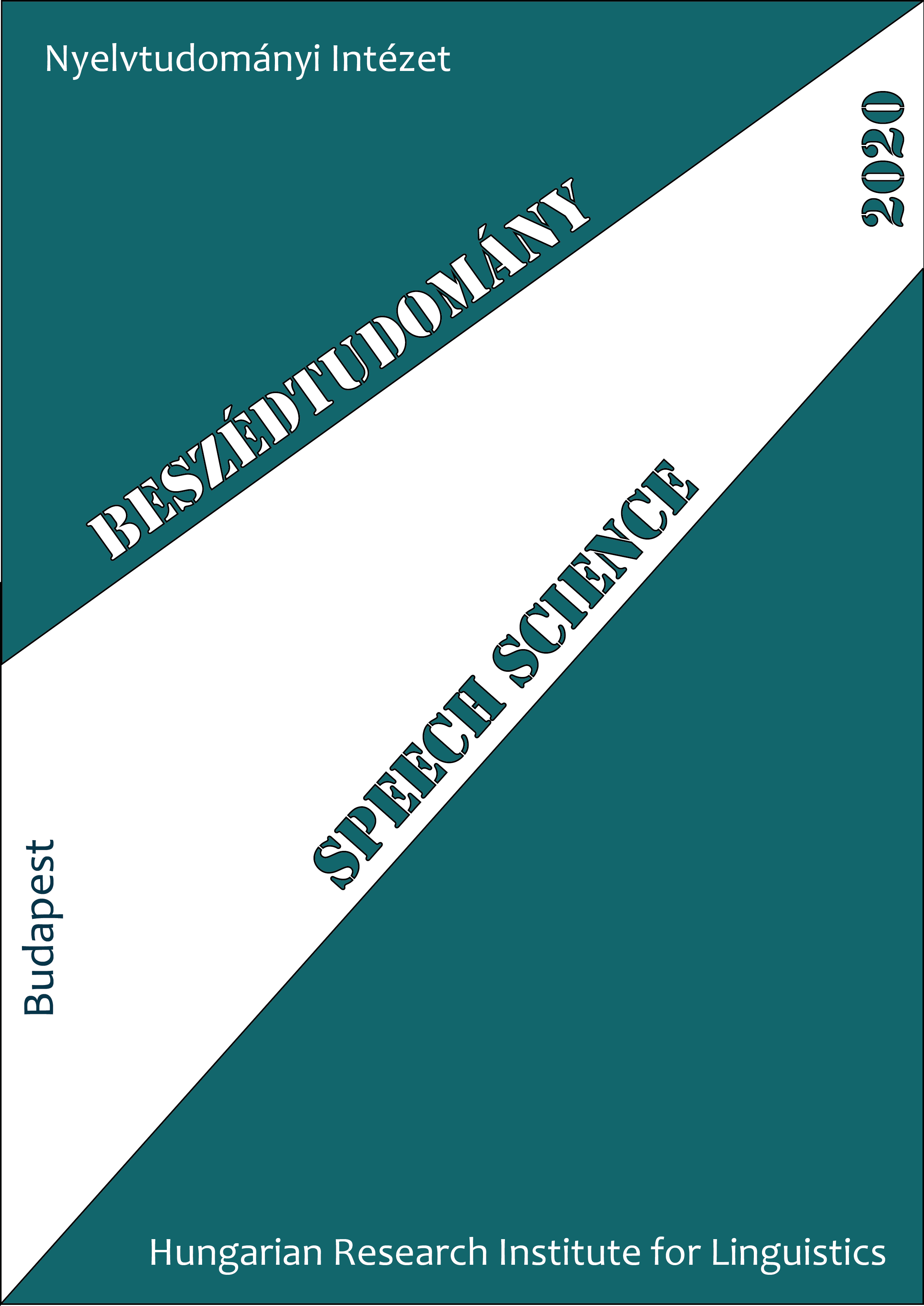The realization of voicing opposition in alveolar fricatives in Hungarian
Preliminary study on articulation and acoustics
Absztrakt
The simultaneous articulation of the turbulent noise of fricatives and vocal fold vibration poses difficulties due to their conflicting pressure requirements. Previous studies found advanced tongue root and narrower obstacle in voiced fricatives than in voiceless ones. The first helps to maintain vocal fold vibration, while the latter helps to achieve the appropriate amount of turbulence.
In our study 12 subjects produced /izi/ and /isi/ sequences in pre-focal position. Headset microphone-, EGG- and tongue ultrasound (US)-signals were recorded. Cessation and restart points of voicing, and the voiceless part ratio (VR) were measured in the EGG-signal. CoG, SD, skewness and kurtosis were measured in the acoustic signal at 11 equally distanced time points in the fricatives. The midsagittal tongue contours were analyzed in the US signal in the closest image to the 0%, 50% and 100% points of the fricatives’ total duration. Voicing characteristics of /z/ and /s/ were compared by LMM, the further spectral features were analyzed by GAMM, and the tongue contours were analyzed by polar GAMM.
The VR, the cessation and restart point of voicing were distinctive, although some of them had large VR in /z/ realizations. That may be resulted not only by the laryngeal settings but also by the supraglottal settings. The present study found tongue contour differences between the two fricatives at 50%, of the fricatives, and also at 0% and 100% point, but in less subjects’ speech: suggesting advanced tongue root and narrower constriction in /z/ realizations and speaker dependent timing of gestures. The spectral measures did not reflect the US results in one-on-one way. That is explicable by the quantal relations of the two domains (Stevens, 1968), and we suggest that they are also a result of further articulatory maneuvers that are applied in the voiced and voiceless fricative pairs (see Liker & Gibbon, 2011, 2013, 2018).




